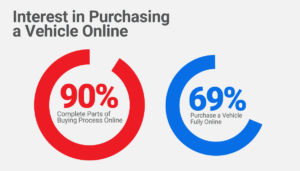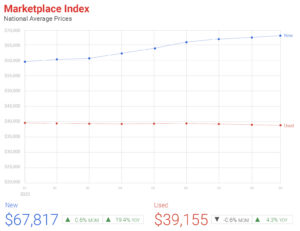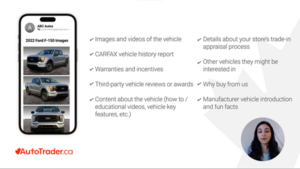Newsroom Articles
As COVID-19 continues, consumers are increasingly not leaving their homes, following government advice. Consequently, online shopping has transitioned from an ease of convenience to a necessity. In order to respond to the needs of consumers, dealers have already implemented or are looking towards digital retailing platforms to integrate into their business. The evolution covers simple measures, such as at home test drive drop-offs, video chats for a personalized experience, or emailing paperwork, to full-blown e-commerce solutions enabling the consumer to buy a car and have it delivered, all without leaving home.
Now, dealers may be wondering how long will consumers be interested in digital retailing? Is it worth the investment? Will consumers adapt to this new level of customer service?
Based on what we know about how consumers shop, and what we’ve observed in other areas around the world, most notably China, the answer really lies in how well a dealership executes their digital retailing strategy, right now.
For as long as people will be at home, they will be online and doing research, if they are looking to purchase a vehicle, trade-in, or renew a lease. There will be two types of consumers shopping; (i) those who are looking to buy a vehicle as soon as we get back to normality, and, (ii) those who want to get a transaction completed as soon as possible – the latter will certainly need to rely on digital retailing, while the former may be more open to it than before.
One car retailer in China claims that after implementing digital retailing to support social distancing, while consumers were isolated in their homes, their online sales have since gone from a few hundred, to thousands. Looking at the trends of Canadian shoppers, we already know they are looking for an alternative purchase process when buying a vehicle, often citing visiting dealerships physically as one of their key pain points, due in part to the hectic demands of modern life. Digital retailing may well be here to stay.
According to a Vehicle Path to Purchase survey conducted by DIG Insights in 2019, consumers only visited 2-3 dealerships before purchasing a car, and, over half of consumers already knew which vehicle they wanted before they visited the dealership. In fact, in that same study, consumers outlined the top activities they would be interested in doing online:
- Calculating the total cost of vehicle ownership,
- Securing financing,
- Arranging for a vehicle to be brought to their home for a test drive; and,
- Calculating the best time to buy or sell a used vehicle based on online deprecation tools
This tells us that consumers aren’t looking to spend a lot of time in the dealership. They want near everything done ahead of time. Their preference is to arrive to the dealership well informed, and, move directly to transacting. Dealers have, over time, begun to add tools that help consumers cut down on time spent at the dealership, namely chats, trade-in solutions, finance calculators, or reserving vehicles online. All are a step in the direction, to keep up with shifts in consumer behaviour.
Now, let’s put ourselves in the shoes of a consumer. With digital retailing, your everyday shopper can conduct all of their research online, reach out to a local dealership with the click of a button, have a dealer representative drop off their desired vehicle for a test drive, sign the necessary paperwork, get their financing in order, and have their purchased vehicle dropped off, right from the convenience and comfort of their own home. Of immediate benefit to consumers, the process eliminates the need to commute to a dealership, wait for a representative to talk to, engage in the back and forth of negotiation – ultimately resulting in a smooth, seamless and pressure-free purchase process.
The better dealerships are prepared to execute and deliver an excellent digital retailing experience, the higher the likelihood a consumer will expect the same process the next time they’re in the market for a car. Consumers adapt to change, and, time and time again, dealers have learned to adapt to emerging consumer trends and new market realities. Despite how confusing and challenging the short-term outlook may be, the changes we see today could be start of something remarkable – a shift to offering consumers a service and experience they never knew was possible, or, may have been hesitant to try out in the past.










